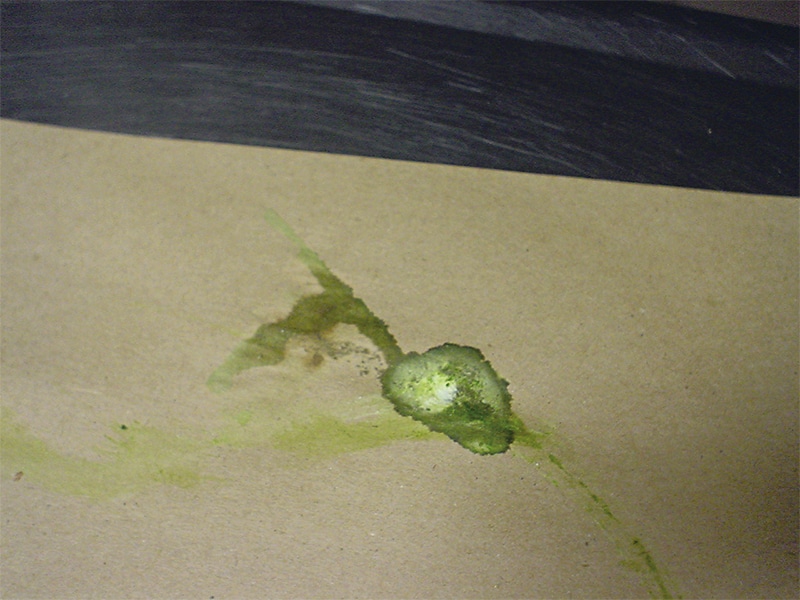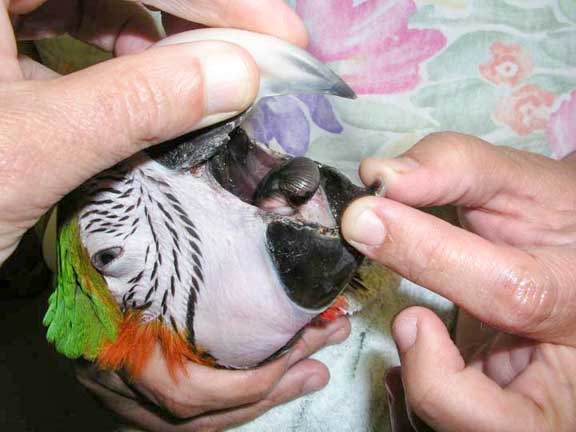
Lead and zinc poisoning are serious health risks for parrots, often resulting from exposure to everyday household items. These heavy metals can be found in a variety of common objects and materials, and when ingested or inhaled by parrots, they can cause severe, sometimes fatal, health issues. Understanding the sources of lead and zinc, recognizing the symptoms of poisoning, and knowing how to prevent exposure are crucial for keeping your parrot safe and healthy. This article provides a comprehensive guide on lead and zinc poisoning in parrots, including causes, symptoms, prevention, and treatment.
Sources of Lead and Zinc Poisoning
Parrots can be exposed to lead and zinc through various sources in their environment. Common sources of lead include old paint, stained glass, fishing weights, curtain weights, batteries, and some imported toys and bird cages. Lead can also be found in solder used in electronics and plumbing materials. Zinc is commonly found in galvanized metals, which are used in some cages, wires, and hardware. It is also present in certain coins, dietary supplements, and some household items like zippers and keys.
Recognizing Symptoms of Poisoning
Lead and zinc poisoning can manifest in a variety of symptoms, often affecting multiple systems in the body. Early detection is crucial for effective treatment. Symptoms of lead poisoning in parrots may include lethargy, vomiting, diarrhea, loss of appetite, weight loss, seizures, increased thirst, and urination. Neurological symptoms such as tremors, incoordination, and blindness can also occur. Symptoms of zinc poisoning can be similar, with additional signs like feather plucking, regurgitation, and anemia. Both types of poisoning can lead to severe health complications if not addressed promptly.
Preventing Lead and Zinc Exposure
Preventing lead and zinc exposure involves removing potential sources of these metals from your parrot’s environment. Ensure that your parrot’s cage, toys, and accessories are free from lead and zinc. Choose cages and accessories made from stainless steel or powder-coated metals, which are safer alternatives. Avoid using galvanized metals or items that could contain these harmful metals. Regularly inspect your parrot’s toys and cage for signs of wear and tear, as damaged items can expose underlying materials that might contain lead or zinc. Be cautious with second-hand or imported items, as they may not meet safety standards.
What to Do If You Suspect Poisoning
If you suspect that your parrot has been exposed to lead or zinc, it is crucial to seek veterinary care immediately. Early intervention can significantly improve the chances of recovery. Contact your avian veterinarian and describe the symptoms and potential sources of exposure. The vet will likely perform diagnostic tests, such as blood tests and X-rays, to confirm the presence of lead or zinc in your parrot’s system. Treatment for lead and zinc poisoning typically involves chelation therapy, which uses specific agents to bind the metals and facilitate their excretion from the body. Supportive care, including fluids, nutritional support, and medications to manage symptoms, may also be necessary.
Long-Term Care and Monitoring
After treatment, long-term care and monitoring are essential to ensure your parrot’s full recovery. Follow your veterinarian’s advice on diet, medication, and follow-up visits. Regular check-ups and blood tests may be required to monitor your parrot’s progress and detect any lingering effects of poisoning. Maintain a safe environment by continuing to eliminate potential sources of lead and zinc. Educate yourself about other household hazards and take proactive steps to prevent future exposures.
Conclusion
Lead and zinc poisoning are serious threats to parrot health, but with awareness and preventive measures, you can protect your feathered friend from these dangers. Recognizing the sources of exposure, understanding the symptoms of poisoning, and knowing how to respond quickly and effectively can make a significant difference in your parrot’s well-being. By taking the necessary precautions and providing prompt veterinary care when needed, you can ensure a safe and healthy environment for your parrot.

How Do Parrots Get Zinc Poisoning?
Zinc poisoning in parrots, also known as zinc toxicosis, occurs when they ingest or come into contact with zinc-containing objects. Here are common sources and ways parrots can get zinc poisoning:
Cage Bars and Accessories: Many bird cages and accessories are coated with zinc. Parrots can ingest zinc by chewing on these items.
Galvanized Metal: Items made from galvanized metal, such as wires, mesh, and hardware cloth, contain zinc. Parrots can ingest zinc particles from these materials.
Household Items: Common household items such as zippers, screws, keys, and coins can be sources of zinc. Curious parrots may chew on these items.
Dietary Sources: In some cases, dietary supplements or foods high in zinc can contribute to zinc toxicity if not properly monitored.
What Are the Symptoms of Metal Toxicity in Parrots?
Metal toxicity, including zinc and lead poisoning, can manifest in various symptoms in parrots. Here are common signs to watch for:
Digestive Issues: Vomiting, diarrhea, and lack of appetite are common gastrointestinal symptoms.
Neurological Symptoms: Tremors, seizures, ataxia (loss of coordination), and head tilting can indicate neurological involvement.
Behavioral Changes: Lethargy, depression, and changes in normal behavior, such as increased aggression or fearfulness.
Respiratory Problems: Difficulty breathing, wheezing, or other respiratory distress may occur.
Physical Signs: Weight loss, increased thirst, and changes in droppings (color, consistency) can be indicators of metal toxicity.
Is Zinc Toxic Like Lead?
Yes, zinc can be toxic to parrots, similar to lead. Both metals can cause serious health issues if ingested in significant amounts. Here are some key points:
Toxicity Levels: Both zinc and lead are harmful to parrots, but lead is generally considered more acutely toxic. Even small amounts of lead can cause severe poisoning.
Chronic vs. Acute Exposure: Zinc poisoning often results from chronic exposure, where the parrot ingests small amounts over time. Lead poisoning can be acute or chronic, depending on the level of exposure.
Symptoms and Treatment: Symptoms of zinc and lead poisoning can overlap, including digestive, neurological, and behavioral issues. Treatment for both involves removing the source of metal, supportive care, and possibly chelation therapy to bind and eliminate the metal from the body.
What Is a Toxicity of Zinc Can Lead To?
Zinc toxicity in parrots can lead to a range of health problems, some of which can be severe or even life-threatening. Here are potential consequences of zinc poisoning:
Organ Damage: Chronic exposure to zinc can damage vital organs such as the liver and kidneys, impairing their function.
Neurological Impairment: High levels of zinc can affect the nervous system, leading to tremors, seizures, and loss of coordination.
Digestive System Issues: Zinc toxicity can cause gastrointestinal distress, including vomiting, diarrhea, and anorexia, leading to weight loss and dehydration.
Immune System Suppression: Zinc poisoning can weaken the immune system, making parrots more susceptible to infections and diseases.
Behavioral Changes: Affected parrots may exhibit changes in behavior, including increased aggression, lethargy, and depression.
Death: In severe cases, untreated zinc toxicity can be fatal. Early detection and intervention are crucial for recovery.
Feedback
When dealing with potential zinc or metal toxicity in parrots, it’s important to provide effective feedback and take immediate action. Here’s how to manage the situation:
Identify and Remove the Source: Inspect your parrot’s environment for potential sources of zinc and other metals. Remove or replace any items that could be harmful.
Consult a Veterinarian: If you suspect metal toxicity, seek veterinary care immediately. A veterinarian can perform diagnostic tests and provide appropriate treatment.
Monitor and Prevent: Regularly check your parrot’s cage, toys, and surroundings for potential hazards. Use bird-safe materials and avoid items containing zinc and lead.
Educate and Inform: Share knowledge about the risks of metal toxicity with other parrot owners and caregivers to promote awareness and prevention.
By understanding the causes, symptoms, and consequences of zinc poisoning and metal toxicity, you can better protect your parrot’s health and well-being.
